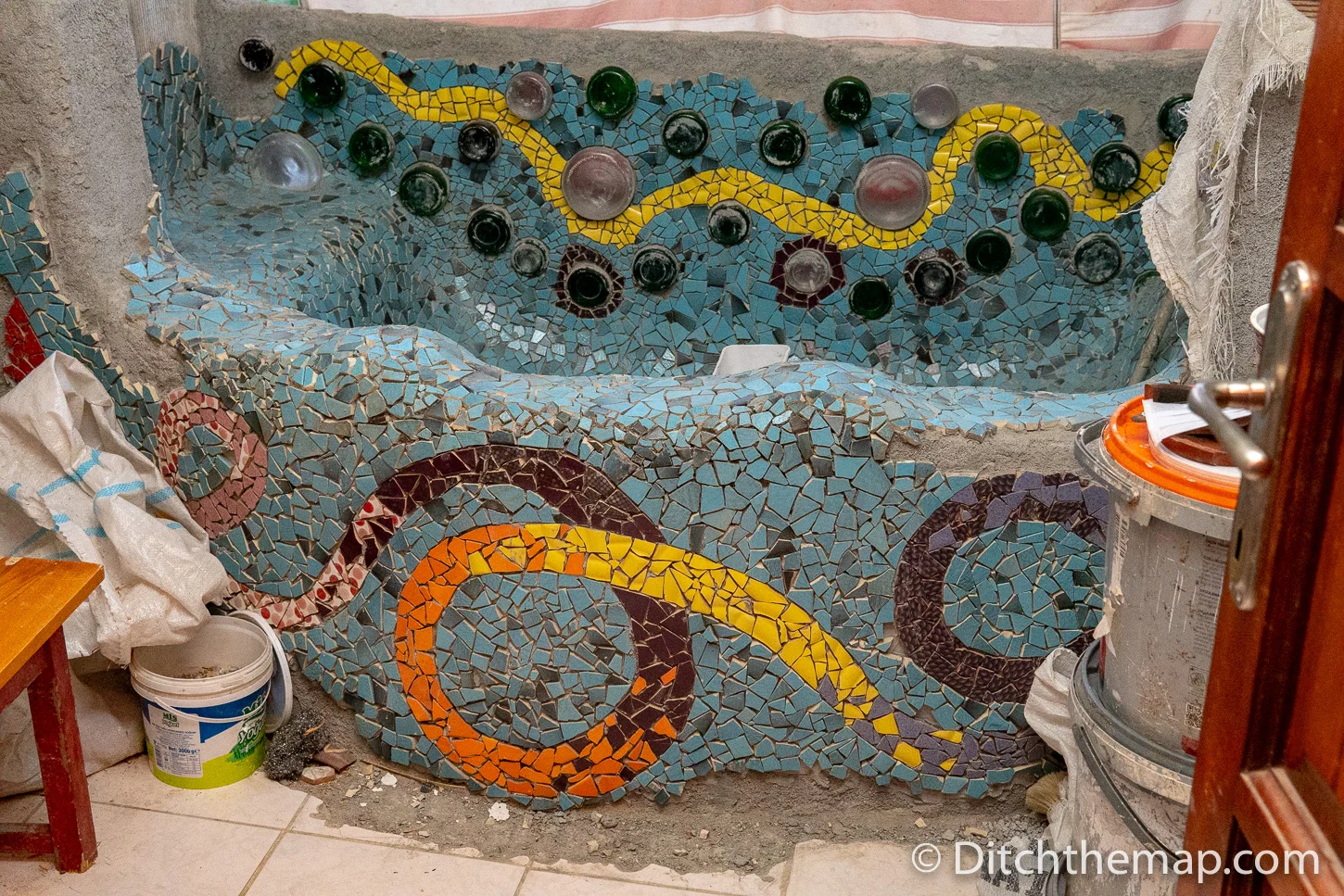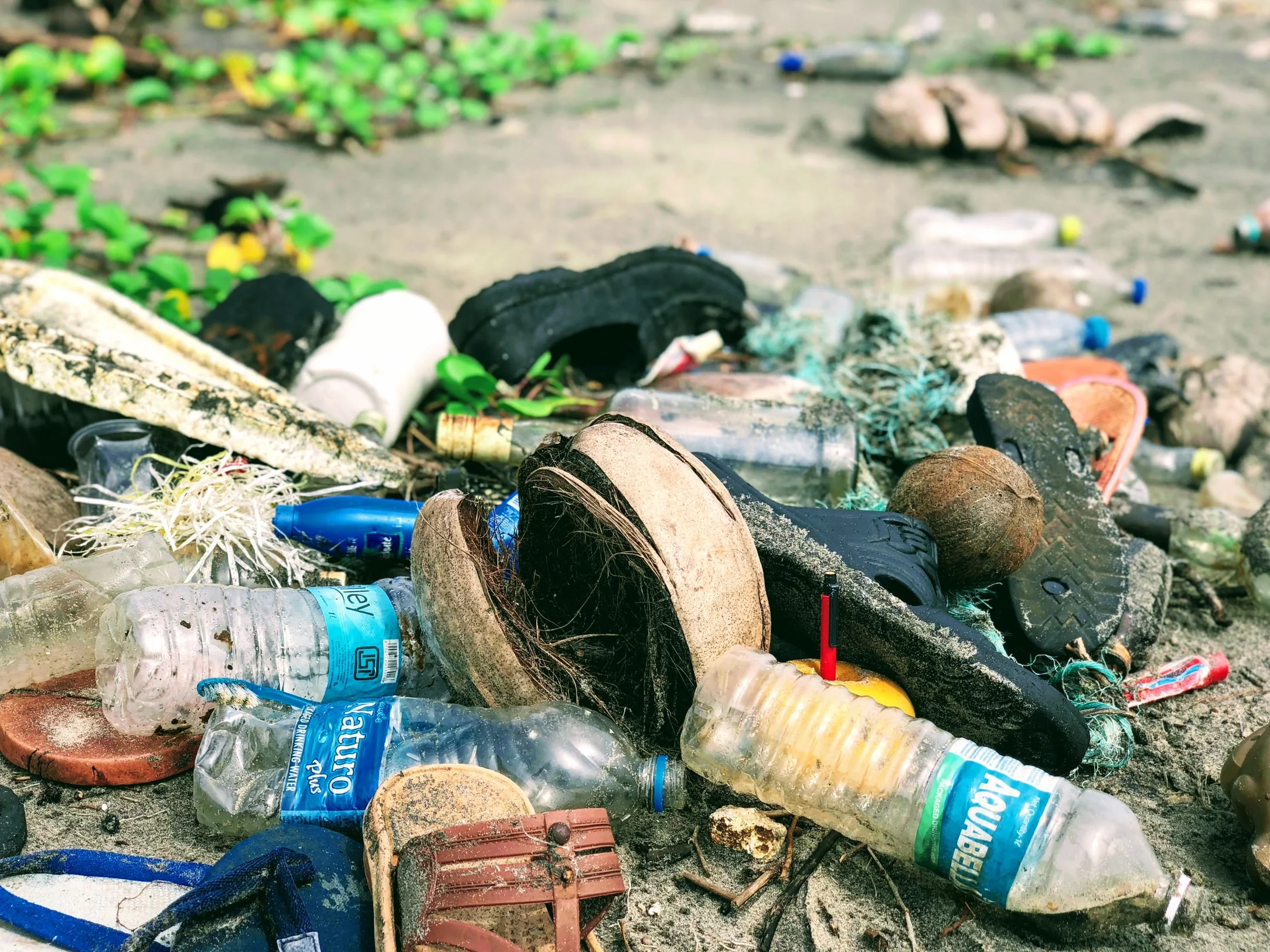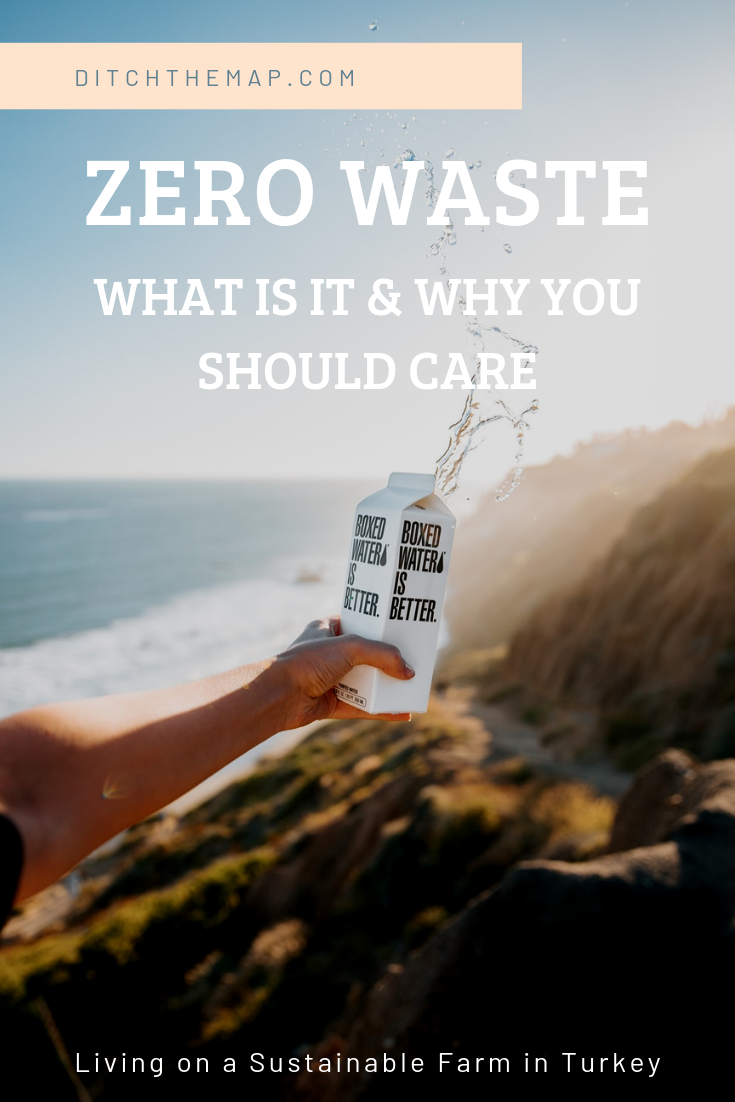A Reflection on Zero Waste Living in a Consumer-Driven Capitalist World
/Overview of Article
After spending two weeks volunteering on a sustainable, zero waste, farm I was inspired to take a deeper look into the concept of “zero waste.” This blog examines what waste is, the impact of wasted/unused food, how our environment is being destroyed, and the detrimental consequences of compulsory consumerism. I also elaborate on the zero waste techniques and principles that I learned while living on the farm. This is by no means a comprehensive guide to zero waste as the subject matter is vast and research continues to grow but I hope it provides some valuable insight and illuminates the magnitude of the issues we and our planet face. Perhaps it will inspire you to incorporate selected practices into your own life.
Why We Chose to Live a Zero Waste Lifestyle for Two Weeks
After we returned from our first trip traveling around the world we took up a minimalist lifestyle. We joined, and I later became president of, the official Philadelphia branch of the minimalist movement. We became increasingly aware of our consumption of resources. During our journey into minimalism—be it through social meetups, lectures, or our own research—we repeatedly came across the phrase zero waste. We had a loose idea of what this meant but wanted to explore the lifestyle further…enter volunteering on a Zero Waste farm on the Turkish Riviera.
Sylvie and I arrived at our zero waste farm in Dalyan, Turkey with the mid-July heat in full effect. We had found the farm using workaway—a website connecting traveling volunteers with local hosts. You can read our past experiences along with what to expect from workaway. We have volunteered around the world more than a handful of times, often working on organic farms, but this would be our first zero waste experience.
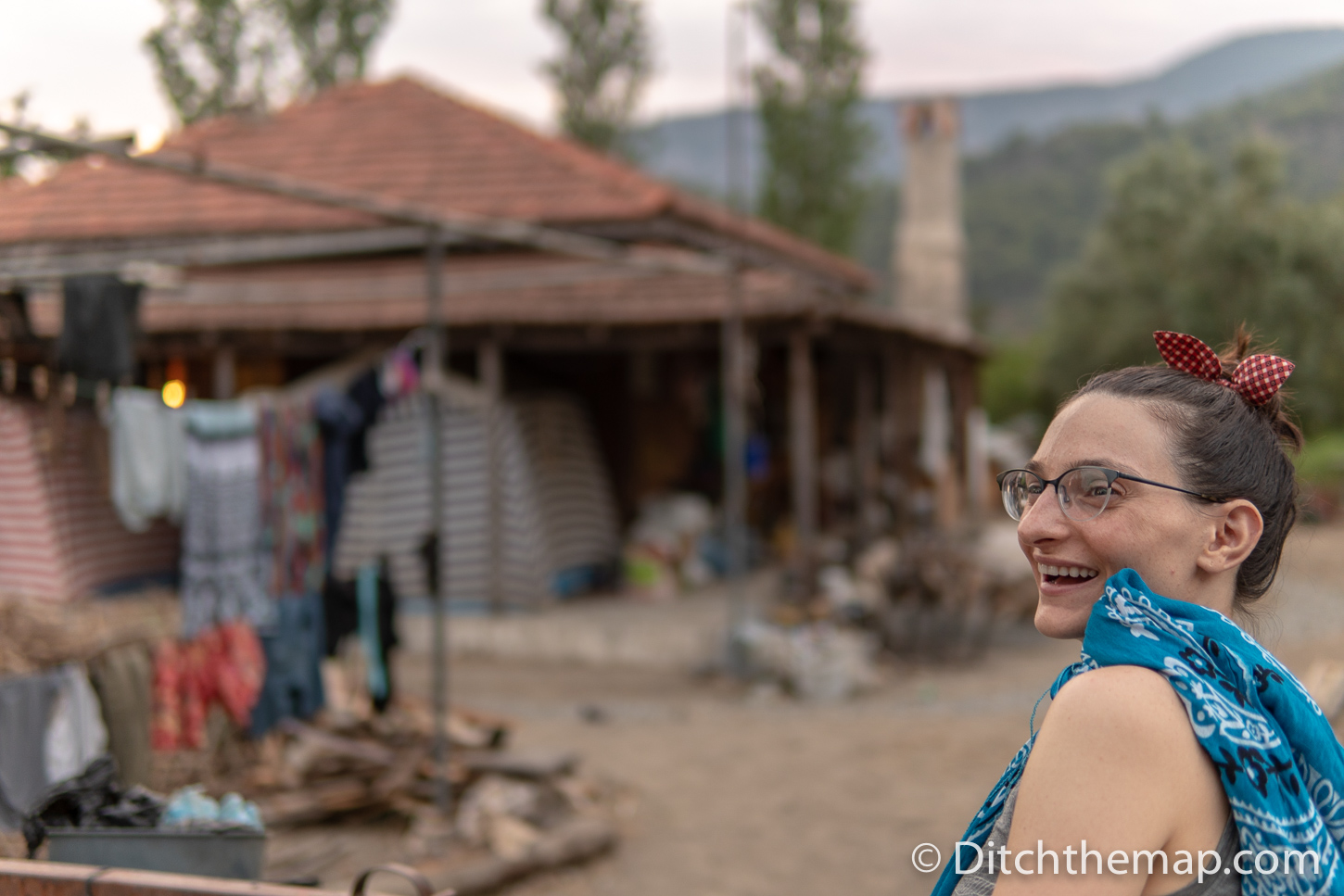
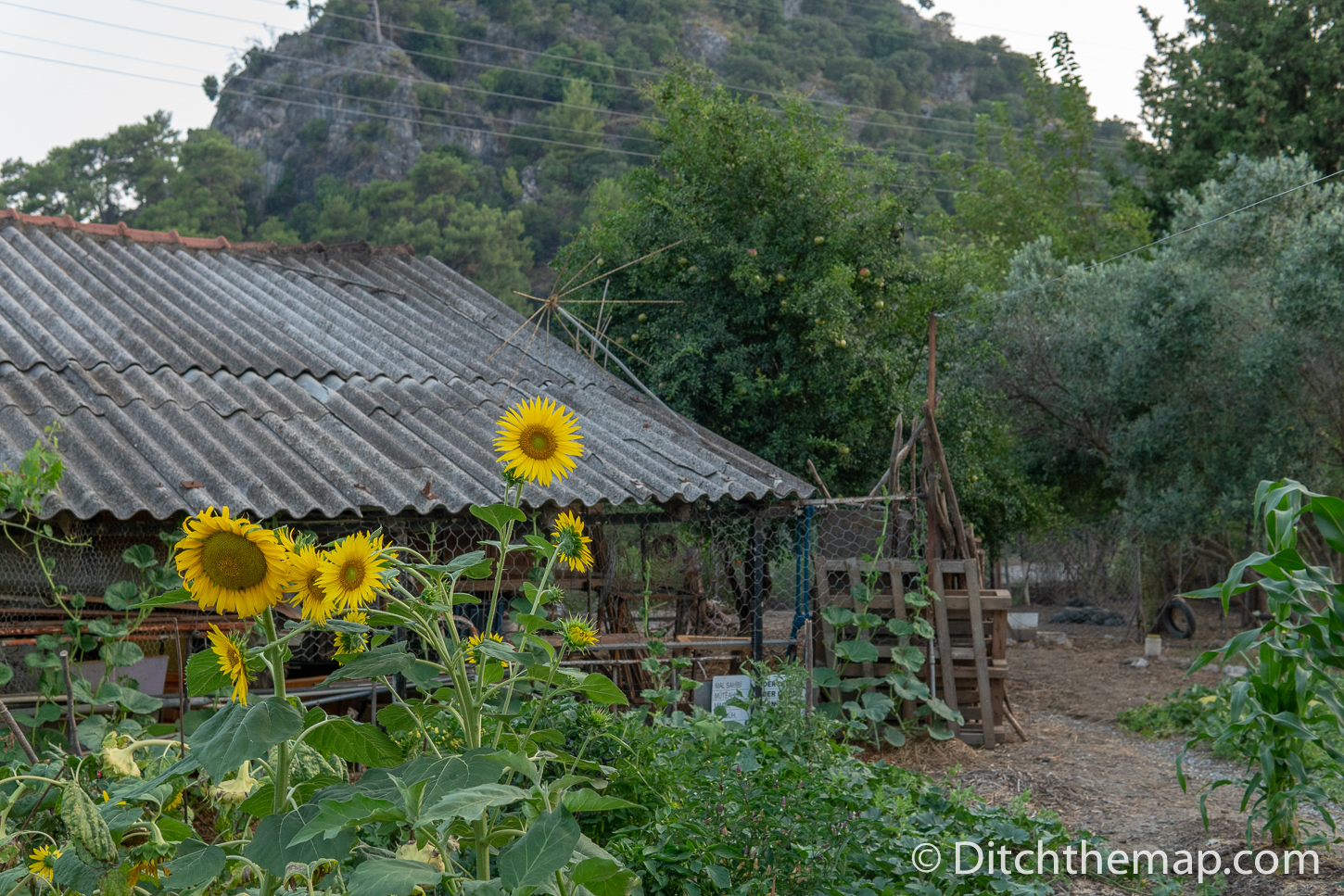
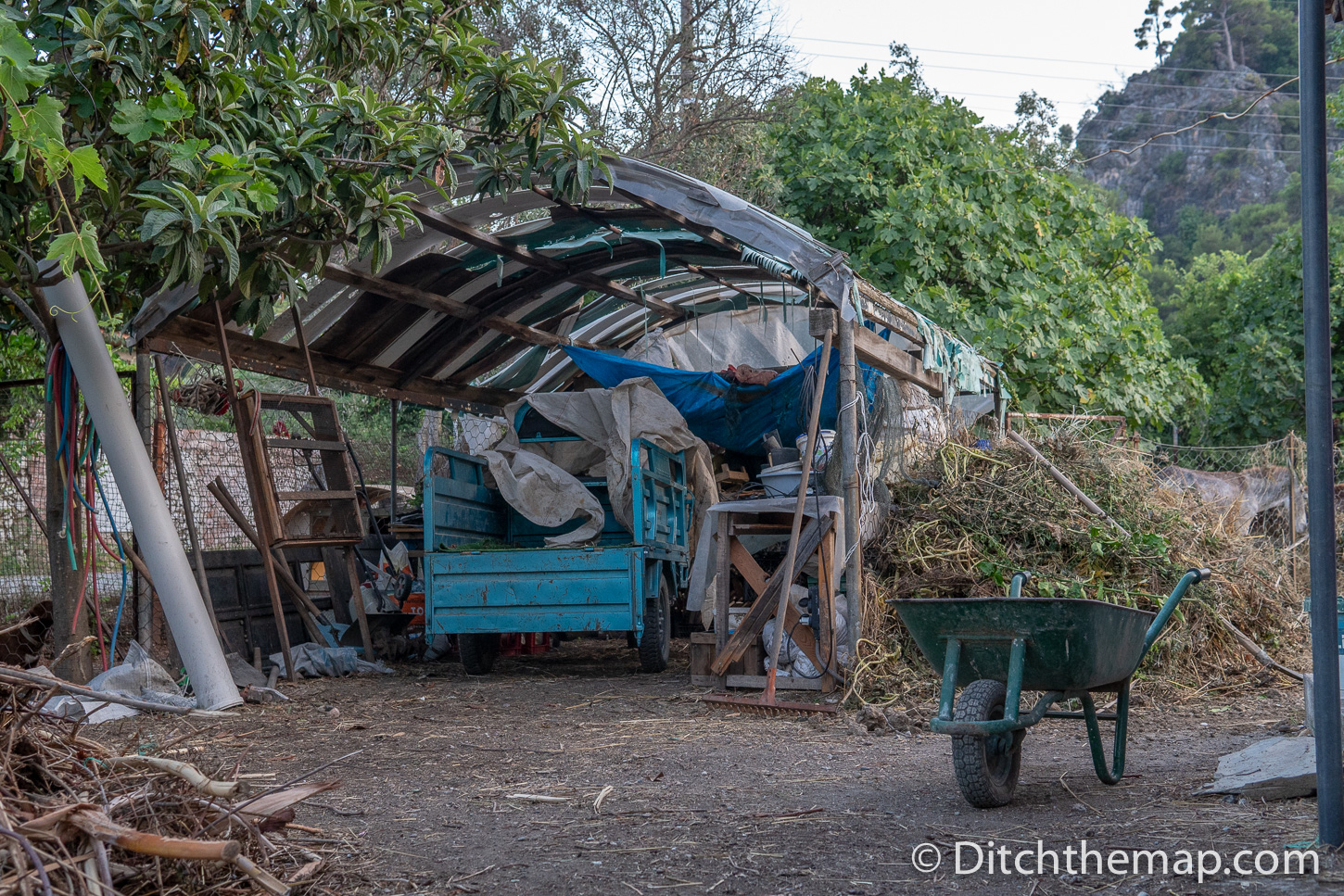
What Does Zero Waste Mean
Initially I did not like the term zero waste. I felt the phrase to be a result of deceptive marketeers trying to push an agenda, on par with suggesting that eating chocolate is good for your heart and that American cereal is actually part of a well-balanced diet. The idea of producing absolutely no waste is thermodynamically impossible—our utter existence creates waste. However after a few days my understanding shifted as I became more open to the concept—the idea is more of a goal than a hard target.
The Term Zero Waste refers to a “set of principles focused on waste prevention that encourages the redesign of resource life cycles so that all products are reused. The goal is for no trash to be sent to landfills, incinerators, or the ocean.” ref. The focus of zero waste is on waste prevention as opposed to end-of-pipe waste management. Because of our consumerist-driven culture we cannot rely on companies to make these changes for us as it is in direct opposition with capitalism and its profit maximizing objective ...a grassroots effort from the consumers is the only meaningful way to implement these principles on any scale. This idea is later discussed under the productization section.
What is Waste?
Most people consider waste to be stuff that they no longer have a use for and therefore end up tossing it out with the garbage. Most people see empty plastic bottles, unused food scraps, chipped tiles, and broken electronics as waste. Thanks, in part to our consumer-driven culture, we associate many items as being trash after their initial use. We buy a widget, use it until its initial purpose is consumed and then throw it in the circular teleportation device that magically empties itself on a weekly basis, for me it was on Thursday mornings.
Man stands by piles of garbage
Some of our waste ends up in landfills that are run by private companies that profit from storing as much waste as possible. Some local regulations are in place about site management but it would go against shareholder interest for a company controlling a landfill to take any precautions above the bare minimum. Landfills contribute to climate change, toxic soil, and a mound of other issues. The volume of our trash that does not end up in domestic landfills gets sold to developing countries with even lower standards of waste removal. Over 40% of all waste ends up in uncontrolled dump sites—much of this trash ends up in our oceans.
There are some more sustainable options that do exist. For example the company The Other Straw sells reusable bamboo straws and cutlery. You can see their products below. Now you can feel good about using reusable products made from sustainable materials.
Reusable bamboo straws
Reusable bamboo cutlery
Waste Stats:
14 billion lbs. of garbage is dumped into our oceans each year. Most of it being toxic to marine life.
The average American produces 4.4 lbs. (2kg) of trash per day (that’s over 1600 lbs. of trash per person in one year).
Americans make up 5% of the world’s population but contribute 40% to the world’s total waste.
Most communities spend more money on waste management than on schoolbooks, fire protection, libraries, and parks.
If the 140 million cell phones which are thrown out annually in the US were recycled they would save enough energy to power 25000 homes for a year.
What we did on the farm to reduce waste:
During our time on the farm we revamped our perception of what trash is. We considered not only the primary use of something but its usefulness after its initial consumption. Things that we could not find a sustainable use for were not purchased and taken back to the farm. Shopping at local markets allowed us to rid our shopping bags of unnecessary plastic packaging. We created a beautiful mosaic in the bathroom using broken tiles that we salvaged from a construction site. We turned Sylvie’s broken straw hat into a small dish to hold teabags. We tied the tomato plants and gourd vines using strands of hemp and twine. We built a shelving system using an old door along with some wood from a broken piece of furniture. I learned that a consumerist’s trash can be repurposed in a multitude of ways—a task that really gets the creative juices flowing.
14 billion lbs. of garbage is dumped into our oceans each year. Most of it being toxic to marine life.
The average American produces 4.4 lbs. (2kg) of trash per day (that’s over 1600 lbs. of trash per person in one year).
Americans make up 5% of the world’s population but contribute 40% to the world’s total waste.
Most communities spend more money on waste management than on schoolbooks, fire protection, libraries, and parks.
If the 140 million cell phones which are thrown out annually in the US were recycled they would save enough energy to power 25000 homes for a year.
What we did on the farm to reduce waste:
During our time on the farm we revamped our perception of what trash is. We considered not only the primary use of something but its usefulness after its initial consumption. Things that we could not find a sustainable use for were not purchased and taken back to the farm. Shopping at local markets allowed us to rid our shopping bags of unnecessary plastic packaging. We created a beautiful mosaic in the bathroom using broken tiles that we salvaged from a construction site. We turned Sylvie’s broken straw hat into a small dish to hold teabags. We tied the tomato plants and gourd vines using strands of hemp and twine. We built a shelving system using an old door along with some wood from a broken piece of furniture. I learned that a consumerist’s trash can be repurposed in a multitude of ways—a task that really gets the creative juices flowing.
We salvaged old tiles and made a beautiful mosaic with them
Water Waste and Why it Matters
For people living near a seemingly endless supply of fresh water it is hard to imagine what water waste is. There are several impacts of water waste but I will only mention two of them. First the process to recover water used in our houses and businesses requires energy. Saving water saves energy and limits the use of harsh chemicals and therefore reduces global emissions. The second reason is a bit more complicated as it has to do with the water cycle. When a farmer waters their crop the water goes into the ground and may take hundreds of years to end up in a reservoir of some type. Because our continual use/waste outpaces the time it takes the water to return to the aquifers we are quite literally reducing the fixed amount of usable fresh water. A water-rich region that wastes water is stealing the water from future generations of water-poor regions around the world.
Water Waste Stats:
The average American uses around 575 liters (152 gallon) of water per day, more than 2x the average European and over 30x the average person living in a developing country.
Less than 1% of the world’s water is freshwater and available for us to consume (not trapped in glaciers).
A European Commission's Joint Research Centre study found that serious conflicts over water are going to arise around the globe in coming years.
1 glass of milk requires 1000 liters of water.
What We did on the Farm to Reduce Water Waste:
On the farm we limited the showers we took—though I’m not sure rinsing ourselves with a garden hose would constitute as a shower anyways. Most of the volunteers cleaned themselves daily by jumping into the nearby river. The only faucet in the house was shared by 10 people and I would estimate that the total time the water ran in a given day was less than 60 seconds. We had a system in place for how to clean dishes. After meals we would heat a small amount of water and place it into a bucket. The water was then mixed with soap and we hand washed our dishes. Afterwards we rinsed the soap off using a second small bucket of water. After spraying the dishes with a 3% hydrogen peroxide mixture we set them to dry. A few gallons of water was all it took to wash all the dishes of 10 people for 3 meals in an entire day. When watering the plants we made sure to focus on the roots, which also helped to limit soil erosion.
Food Waste and Why You Should Care
25% of the world’s fresh water supply is used to grow food that is never eaten—food waste is an extension of water waste.
Additionally, the solid waste in landfills decomposes into methane while waste exposed to the air decomposes into carbon dioxide. Methane is a gas with a greenhouse effect 25x greater than that of carbon dioxide. Basically when solid waste goes to a landfill it contributes to climate change 25x more than if it was composted or even left rotting on a vine.
Then there are other aspects of food waste such as energy consumption used to produce, transport, and store the extra food. I won’t even mention the havoc that synthetic fertilizer has on our environment.
Food Waste Stats:
Americans throw out half the food they buy, resulting in immense food waste
1 kg of unused beef equates to the same water wastage as keeping a shower continually running for 4 days and 8 hours [50000 liters].
America alone wastes over $160 billion a year in food waste.
Americans throw out 43000000 lbs. of food each day (tossing away more than half of all food).
The food wasted worldwide could feed half our globe’s population.
If food waste were a country it would be the third largest emitter of greenhouse gases.
Over half of all food waste takes place in the home.
What we did on the farm to reduce food waste:
We would not cook more grains until we ate what was left from prior meals. Sometimes rice, bulgur, and lentils would last us 3 days. By day 3 we would get creative by mixing all types of leftovers into new and unique mixtures of food. We would feed our food scraps to the ducks and chickens the following day while items that had no nutritional content would be added to the compost pile. We also ate only locally grown food to limit our energy use as transporting foods comes at a large energy cost.
The Problem with Productization, Why We Cannot Count on Companies
Let’s face it, we live in a consumerist world that is driven by capitalism. Companies make and sell products, that’s just what they do. They may state to have multiple objectives but their primary aim is to make money for their shareholders—you can actually sue a company that makes a decision that is not in line with making the most money. I get sick after watching 1 episode of Shark Tank—you will see people more interested in “making it big” than on how to substantially improve humanity. We now live in a world where our culture values making money over helping people. If we value our own well-being over our neighbors how the hell are we going to get people to care about something as abstract as our planet? Most people are somewhat conscience of this problem but are too lazy, or maybe too brainwashed, and will look to companies for solutions. A consumer buying a product that marketers promise to be sustainable, green, or use recycled material is only falling victim to the trap of capitalist-driven productization.
A large problem with capitalism is that it is shortsighted, allowing for single entities to consume resources for immediate gain without providing an equal level of responsibility to its long-term damage/impact. Think about old mining towns, fishing villages, coal plants, oil wells, diamond mines, etc. where companies profit from the resources in that region. 10 years later the executives are sitting on their multi-million dollar yachts while people in the towns struggle to pay their health bills. This is what I mean by direct gain without long-term responsibility. The notion that a few people benefit at the expense of the many is what disgusts me of capitalism. Resources are finite and capitalism only aids to redistribute them. Gold into money, land into money, labor into money, etc. This mentality has been running at full throttle for decades and has left the masses morally bankrupt and in the endless pursuit of the proverbial carrot. This system was built during a time when there was enough abundance to be shared but we no longer live in that world. Did you know a young couple could actually support themselves through grad school with children working part time jobs only 50 years ago. Fat chance now! Capitalism, by its own nature, will continually concentrate our limited resources to fewer and fewer entities. Class warfare anyone?
I propose a system where we stop treating everyone and everything as a transaction for personal gain. Stop with this illusion of branding and image, it’s as fake as the photoshopped legs on this year’s Sports Illustrated cover model. Everyone will get old and wrinkled and your new car or couch will eventually rust or break. Start developing your inner worth and stop buying into this idea where your worth is even remotely connected to dollars and our plastic appearances. Develop your inner worth and you will break free of relying on something else, like a company, to set your worth.
A company may claim to be ‘green’ or use ‘recycled plastic’ but these are marketing tactics to allow a consumer to feel good about their purchase (trust me I worked as a marketing strategy consultant). Any product truly produced in a sustainable manner would be priced out of the market and developed at too low a production level to serve a population other than a regional community. You have to remember that any product you buy from a company has been produced solely for the purpose of maximizing income. Capitalism in America has led to the complete disconnection between the products we buy in the store and the impacts of its production. Thank you corporate America for successfully making profit your primary goal (read with sarcasm). I am not suggesting that buying things are bad but the market in which we participate does matter, has an impact, and is a form of activism.
— Below is an example of how a profit-maximizing company runs an egg production business where money is the prime objective. —
Egg production in profit maximizing company:
Since land, shelter, and equipment cost money chickens are crammed inside a warehouse to provide the largest yield per acre. Hens are crammed so closely that they do not have room to open their wings.
During sorting male chickens are thrown into a shredder since they are considered waste as they do not lay eggs and therefore do not generate revenue.
Hens have portions of their beaks burned off to prevent pecking each other to death (this phenomenon occurs when hens are forced to live in tightly confined spaces)
The areas are so cramped that the chickens defecate and urinate on themselves.
The light in the factories is constantly manipulated to maximize egg production.
Occasionally hens are fed reduced-calorie diets to induce an extra laying cycle every so often.
Chickens are fed corn, an unnatural diet, as it is the cheapest form of calories thanks to government subsidized production.
Even companies that market ‘free-range’ only have their chickens free to range for a few weeks of their life before being locked into their cages where they will lay eggs for the rest of their short lives.
After 2 years of these extreme conditions they are bulk sold to the pet food industry, studies have shown that over 30% of these chickens suffer from broken bones due to neglect and harsh living condition.
Read this article to learn more about the realities of egg production. You can also watch the video below!
The more you look into how our products are made—and you don’t have to look too far— the more you can see how disgraceful our profit optimizing system has become. It’s all driven by maximizing revenue and minimizing costs—or profit as it is called in the business world. Did you ever stop to consider that you food you are buying for your dog may be helping to promote the harsh conditions in the egg production industry, or the devastating impacts of the overproduction of corn and monocropping, or the damages synthetic fertilizers are causing?
Eggs are not just products! When will we start caring about the processes that create our outputs? As long as America’s materialist greed for the never-ending desire for more prevails we will be stuck with this problem at a cultural level but it doesn’t have to stop there. The choices you make and the things you buy are a form of activism.
The creation of products, or productization, is the problem—companies create things for us to buy. This creates a culture where consumers look to companies for ‘solutions’ to their ‘problems’—though smart marketers will often create problems consumers didn’t even know they had. This is why we have products like ‘cage-free egg’ and ‘the impossible burger’. They are marketing their way around the issues that they are creating. The impossible burger, a machined product that is made from more than 20 ingredients/chemicals including genetically engineered yeast, Soy Protein Concentrate, Methylcellulose, Zinc Gluconate, multiple oils, etc. is not the type of thing I want to put inside my body. I think I’ll stick to something less manufactured and something more ‘food-like’.
It has taken me years to recognize that buying the lowest price item almost always costs more, just not in dollars. The only person happy to participate in the low low prices driven by our consumerist-motivated lifestyle is the ignorant consumer. Don’t be one!
Product Waste Stats:
Packaging represents 2/3 of household trash.
4% of the world’s children live in the US but Americans buy (and throw away) 40% of the world’s toys.
Between 8,000 and 10,000 disposable diapers are used and thrown away before an average child is potty-trained.
Disposable diapers will still be in the land fill 300 years after they were put there.
Traveling extensively for several years had already allowed us to break the cycle of thinking we need to consume things being marketed by companies. On the farm we stayed away from packaged product all together. We bought eggs from neighbors that take care of their chickens and let them feed on insects and graze as they please—when the chickens get too old to lay eggs they simply roam free on the property. Did you know that chickens consume crop-eating insects and fertilize the fields at the same time? Our water did not come to us inside a Pepsi-branded bottle but from a local well several kilometers away. We used reusable water bottles like this one here. Sodium bicarbonate was used in place of toothpaste and handmade soap was used in place of shampoo and dish detergent.
Waste is a typical byproduct of living a modern life but it is reeking havoc on our environment
Final Words on Zero Waste Living
I realize that living a zero waste lifestyle may not be for everyone—using a composting toilet can be a tough hurdle for most people. I chose to live Zero Waste not because I thought I would make a difference or change the world but because ultimately I have to live with the decisions I make and the person I respect most in this world should be myself. The more we travel the more we are exposed to and it becomes increasingly more difficult to be ignorant to our actions. If you walk away from this article with only one message I hope it’s this, “consider the impacts of your actions and stop living a life of intentional ignorance”. Next time you buy your discounted dog food, cheap gallon of milk, or half-priced pair of jeans ask yourself what their true costs really are.
Don’t forget to pin this article and share it with your friends.




